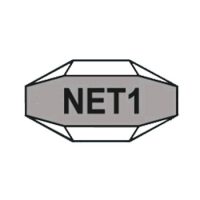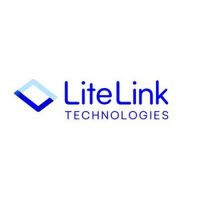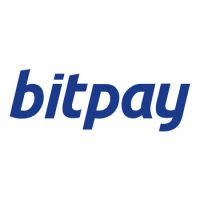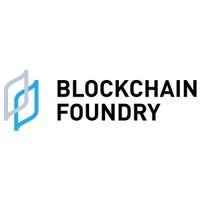Blockchain
What can blockchain do for AI? Not what you’ve heard.
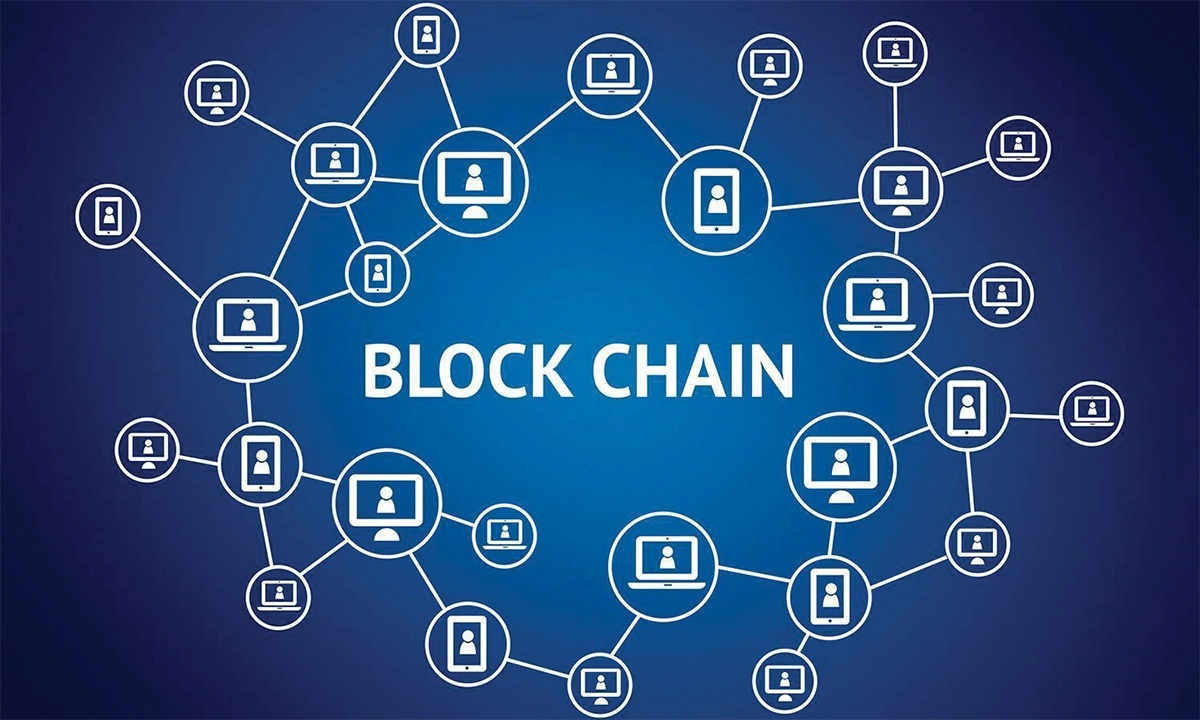
Industries everywhere are asking “What can AI do for us?”
But the blockchain industry, known for challenging norms, is also asking the opposite question: “What can blockchain do for AI?”
While there are some compelling answers, three narratives have emerged around this question that are frequently misleading and, in one case, potentially even hazardous.
Narrative #1: Blockchain can combat misinformation caused by generative AI
An expert panel at a recent Coinbase event concluded that “blockchain can counter misinformation with cryptographic digital signatures and timestamps, making it clear what’s authentic and what’s been manipulated.”
This is true only in a very narrow sense.
Blockchains can record digital-media creation in a tamper-proof way, i.e., so that modification of specific images is detectible. But this is a far cry from clarifying authenticity.
Consider a photo of a flying saucer hovering above the Washington Monument. Suppose that someone has registered its creation in, say, block 20,000,000 of the Ethereum blockchain. This fact tells you one thing: The flying saucer image was created before block 20,000,000. Additionally, whoever posted the image to the blockchain — let’s call her Alice — did so by digitally signing a transaction. Assuming that Alice’s signing key wasn’t stolen, it’s clear that Alice registered the photo on the blockchain.
None of this, however, tells you how the image was created. It might be a photo that Alice snapped with her own camera. Or Alice might have gotten the image from Bob, who Photoshopped it. Or maybe Carol created it with a generative AI tool. In short, the blockchain tells you nothing about whether aliens were touring Washington, D.C.—unless you already trust Alice to begin with.
Some cameras can digitally sign photos to authenticate them (assuming their sensors can’t be fooled, which is a big if), but this isn’t blockchain technology.
Narrative #2: Blockchain can bring privacy to AI
Model training is a data-hungry operation. The bigger and better the training data set, the better the resulting model. For many applications, training on private user data is essential. For instance, creating a good machine-learning model to diagnose medical conditions requires data from a population of real patients. Handling such highly sensitive data securely is a challenge. Some are trumpeting blockchain technologies as a solution.
Blockchains, however, are designed for transparency — a property at odds with confidentiality.
Proponents point to privacy-enhancing technologies advanced by the blockchain industry to address this tension — especially zero-knowledge proofs. Zero-knowledge proofs, however, don’t solve the problem of privacy in AI model training. That’s because a zero-knowledge proof doesn’t conceal secrets from whoever is constructing the proof. Zero-knowledge proofs are helpful if I want to conceal my transaction data from you. But they don’t enable me to compute privately over your data.
There are other, more relevant cryptographic and security tools with esoteric names, including fully homomorphic encryption (FHE), secure multiparty computation (MPC) and secure enclaves. These can in principle support privacy-preserving AI (specifically, “federated learning”). Each has important caveats, though. And claiming them as blockchain-specific technologies would be a stretch.
Narrative #3: Blockchains can empower AI bots with money — and that’s a good thing
Jeremy Allaire, CEO of Circle, has noted that bots are already performing transactions using cryptocurrency and tweeted that “AI and Blockchains are made for each other.” This is true in the sense that cryptocurrency is a good match for the capabilities of AI agents. But it’s also worrisome.
Many people fret about AI agents escaping human control. Classic nightmare scenarios involve autonomous vehicles killing people or AI-powered autonomous weapons going rogue. But there’s another vector of escape: The financial system. Money equals power. Give that power to an AI agent and it can do real damage.
This problem is the topic of a research paper that I co-authored in 2015/6. My colleagues and I examined the possibility of smart contracts, programs that autonomously intermediate transactions on Ethereum, being used to facilitate crime. Using the techniques in that paper and a blockchain oracle system with access to LLMs (Large Language Models) such as ChatGPT, bad actors could in principle launch “rogue” smart contracts that automatically pay bounties for committing serious crimes.
Happily, rogue smart contracts of this kind aren’t yet possible in today’s blockchains — but the blockchain industry and crypto enthusiasts will need to take AI safety seriously as a future concern. They will need to consider mitigations, such as community-driven interventions or guardrails in oracles to help enforce AI safety.
The integration of blockchains and AI does hold clear promise. AI may add unprecedented flexibility to blockchain systems by creating natural language interfaces to them. Blockchains may provide new financial and transparency frameworks for model training and data sourcing and put the power of AI in the hands of communities, not just enterprises.
It’s still early days, though, and as we wax lyrical about AI and blockchain as an enticing mix of buzzwords and technologies, we need to really think — and see — things through.
Source: Blockworks
The post What can blockchain do for AI? Not what you’ve heard. appeared first on HIPTHER Alerts.
Blockchain
Blocks & Headlines: Today in Blockchain – May 19, 2025 | DoubleZero, Toobit, Story Protocol, Marco Polo, Argo Blockchain

May 19, 2025 — As the blockchain industry surges into its next phase of maturity, today’s briefing spotlights five pivotal developments shaping the crypto ecosystem: the physical limits of the public internet, a major exchange’s European push, Hollywood’s bet on Web3, blockchain’s role in global trade finance, and the drive for sustainable mining. Together, these stories reflect an industry wrestling with infrastructure bottlenecks, forging new community models, and renewing its environmental and regulatory commitments. From fiber-optics rails to Hollywood IP tokenization, let’s unpack what matters today—and why it matters to you.
1. Breaking the Bandwidth Barrier: DoubleZero’s Quest for High-Speed Blockchain Rails
The Story: At Consensus 2025 in Toronto, DoubleZero co-founder and CEO Austin Federa warned that today’s public internet “was never built for high-performance systems,” creating a critical bottleneck for high-throughput blockchain networks. Unlike traditional client–server models, modern blockchains require validators to rapidly switch between heavy data consumption and mass broadcast, demanding both low latency and massive bandwidth. By building dedicated fiber-optic communication rails, DoubleZero aims to slash transaction latency, tighten DeFi spreads, and unlock new use cases once stymied by internet constraints. Founded in late 2024, the project raised $28 million and plans its public mainnet launch in H2 2025, following an April token sale open to validators from Solana, Celestia, Sui, Aptos, and Avalanche.
Analysis & Implications: Federa’s remarks signal a shift: the limiting factor for blockchain performance has moved off software and compute and onto physical infrastructure. As decentralized networks scale, the quality of global connectivity becomes paramount. For DeFi traders, faster rails could mean tighter arbitrage windows and lower slippage; for enterprise adopters, sub-second confirmations could finally rival traditional payment rails. Yet building and maintaining dedicated networks carries capital and regulatory burdens. Will blockchain projects partner with telecom giants or build private consortia? How will this influence the ongoing L2 vs. L1 scalability debate? As the blockchain space broadens into enterprise domains, physical network investments may become as strategic as protocol design.
Source: Cointelegraph
2. Toobit’s European Expansion: Platinum Sponsorship at Dutch Blockchain Week
The Story: On May 19, Toobit announced its role as Platinum Sponsor of Dutch Blockchain Week 2025 (May 19–25) and revealed plans to host a booth at the Dutch Blockchain Summit in Amsterdam on May 21–22. Coming off its Platinum role at Web3 Amsterdam earlier this year, the award-winning derivatives exchange seeks to deepen ties with Europe’s crypto community—showcasing trading solutions, exploring partnerships, and engaging physically with its user base.
Analysis & Implications: Sponsorship of marquee events like Dutch Blockchain Week underscores exchanges’ pivot toward community engagement and regional regulatory alignment. As the EU advances its Markets in Crypto-Assets (MiCA) framework, European crypto players face both opportunity and uncertainty. Toobit’s visible presence signals confidence in the continent’s evolving legal landscape—and the strategic importance of in-person dialogue. Beyond brand building, these events catalyze partnerships with custodians, DeFi projects, and institutional investors. For traders, this focus on local engagement could translate into tailored products—European stablecoins, localized fiat on-ramps, or region-specific compliance tools. Toobit is betting that boots on the ground matter as much as bits on the chain.
Source: GlobeNewswire
3. Hollywood Meets Web3: David Goyer’s “Emergence” Universe on Story Protocol
The Story: At Consensus’s Toronto conference, filmmaker David Goyer (Blade trilogy, The Dark Knight, Apple TV’s Foundation) unveiled Emergence, a sprawling sci-fi franchise built on his blockchain platform Incention and powered by Story Protocol. Leveraging a 2,500-page story bible and an AI “Atlas” agent, Goyer plans community-driven storytelling—fans co-create characters, up-vote submissions, and share licensing upside via on-chain smart contracts. Story Protocol, which has raised over $80 million from a16z, Hashed, and Endeavor, offers IP registration, royalty-sharing, and permissioned remixing, aiming to decentralize franchise building.
Analysis & Implications: Goyer’s venture epitomizes the emerging creator economy in Web3, where tokenized IP and community governance challenge Hollywood’s top-down model. By placing narrative rights and royalties on-chain, creators and fans potentially share in franchise upside—aligning incentives but also demanding robust smart-contract frameworks. Yet risks abound: quality control, legal enforceability of on-chain IP, and community moderation. Will traditional studios adapt or resist? And can emergent on-chain governance scale for billion-dollar franchises? As AI and blockchain converge, the entertainment industry faces disruptive opportunities—and headwinds—around ownership, monetization, and creative collaboration.
Source: CoinDesk
4. Beyond Letters of Credit: Blockchain’s Transformative Role in Digital Trade Finance
The Story: In a comprehensive overview, Global Trade Magazine highlights blockchain’s potential to overhaul international commerce by digitizing trade finance workflows. Traditional paper-based processes—letters of credit, bills of lading—are slow, error-prone, and fraud-susceptible. Blockchain introduces immutable, shared ledgers and smart contracts that automate payment releases (e.g., upon IoT-verified delivery), collapse settlement times from weeks to hours, and enhance KYC/AML compliance via permissioned networks. Platforms such as R3’s Marco Polo, the we.trade consortium, and IBM/Maersk’s TradeLens demonstrate real-world deployments. Looking ahead, AI, machine learning, and IoT integration will further streamline risk scoring and anomaly detection—but challenges around protocol interoperability, regulatory standardization, and legal enforceability remain.
Analysis & Implications: As global trade rebounds post-pandemic, inefficiencies in trade finance cost banks and businesses billions annually. Blockchain’s promise lies in single-source-of-truth data sharing—cutting reconciliation costs and unlocking capital. For DeFi projects eyeing institutional corridors, tokenized trade-finance instruments could represent multi-trillion-dollar on-chain markets. Yet widespread adoption hinges on multi-stakeholder collaboration—banks, customs agencies, insurers, and carriers—and on harmonized regulations. The next frontier: bridging public and private blockchains, ensuring data privacy while enabling transparency. For blockchain advocates, trade finance offers both a showcase and a stern test of real-world scalability.
Source: Global Trade Magazine
5. Argo Blockchain’s Green Mining Playbook for 2025
The Story: UK-based miner Argo Blockchain (LSE: ARB, NASDAQ: ARBK) continues to expand sustainable crypto-mining operations in 2025. Leveraging hydroelectric power in Quebec and deregulated energy in Texas, Argo mined 1,298 BTC in 2024 at 2.8 EH/s capacity. In March, it announced a $25 million credit facility to upgrade its Texas data center with next-gen ASICs—targeting a 20% hash-rate boost by Q3 2025. With 95% of Quebec power from renewables, Argo aims for 3.5 EH/s by 2026. Competitors Marathon Digital (29.8 EH/s) and Riot Platforms (22.5 EH/s) focus on vertical integration and energy arbitrage, but remain more reliant on fossil fuels. Facing Bitcoin’s price swings, halving pressure, and potential regulatory curbs, Argo’s public listing and green credentials position it to attract ESG-conscious investors.
Analysis & Implications: Crypto mining’s environmental impact remains a flashpoint. Argo’s renewable-first strategy offers a template for sustainable operations, but scaling green hashing sustainably—and profitably—poses capital and regulatory challenges. As governments scrutinize energy usage, mining hubs may shift toward regions with abundant renewables. The storage of zero-carbon electricity via mining rigs could even emerge as a grid-stabilization service. Yet profitability remains tightly coupled to Bitcoin’s price and block rewards. For institutional backers and ESG funds, companies like Argo may represent the safest crypto-mining bet. However, industry consolidation and hardware innovation cycles will determine who thrives in this high-stakes infrastructure race.
Source: Blockchain Magazine
Conclusion: Key Takeaways
-
Infrastructure Matters: With dedicated fiber-optics rails, projects like DoubleZero spotlight that blockchain scaling is as much about hardware as code.
-
Regional Engagement: Toobit’s European sponsorship underscores the ongoing importance of in-person community building amid evolving regulatory regimes.
-
Creator-Economy Revolution: David Goyer’s Emergence franchise illustrates Web3’s potential—and complexities—in democratizing IP creation and monetization.
-
Institutional Use Cases: Trade finance remains a prime arena for blockchain’s real-world impact, but adoption depends on interoperability and regulation.
-
Sustainability Imperative: Mining firms like Argo must balance growth, profitability, and environmental stewardship to appeal to both crypto purists and ESG investors.
As the blockchain and cryptocurrency landscape advances, these stories offer a snapshot of an ecosystem grappling with scale, regulation, community, and sustainability. Stay tuned for tomorrow’s briefing—where we’ll continue to track the innovations and challenges defining Web3’s evolution.
The post Blocks & Headlines: Today in Blockchain – May 19, 2025 | DoubleZero, Toobit, Story Protocol, Marco Polo, Argo Blockchain appeared first on News, Events, Advertising Options.
Blockchain
MANTRA and WIN Investments Join Forces to Bring Real-World Sports Assets Onchain

MANTRA
Blockchain
Abraaj Restaurants Group announces it has become the first bitcoin treasury company in the Middle East
Al Abraaj Restaurants
-

 Blockchain Press Releases7 days ago
Blockchain Press Releases7 days agoBullish partners with the Gibraltar Government and GFSC to pioneer world’s first crypto clearing regulation
-

 Blockchain Press Releases4 days ago
Blockchain Press Releases4 days agoFintica AI and Mima Wallet Announce Strategic Partnership and Launch Joint Venture, Fintica Crypto Ltd
-

 Blockchain4 days ago
Blockchain4 days agoBlocks & Headlines: Today in Blockchain – May 15, 2025 (BTC’s Push, Pi Network Fund, Stablecoin Levers, JPM Pilot, OKX × Man City)
-

 Blockchain4 days ago
Blockchain4 days agoBDM Digital Initiates Promising Dialogue with Stanford Law School in Pursuit of Strategic Partnerships in Silicon Valley
-
Blockchain4 days ago
Wen Acquisition Corp Announces the Pricing of $261,000,000 Initial Public Offering
-
Blockchain3 days ago
Mercurity Fintech’s Subsidiary Grows Cross-Border Business Advisory Services with New Asia-Pacific Healthcare Client Engagement
-

 Blockchain3 days ago
Blockchain3 days agoSaudi Arabia Loan Aggregator Market Report 2025: Retail Digital Payments Hit 70% as Tech Adoption Transforms Saudi Financial Services – Competition, Forecast & Opportunities to 2030
-

 Blockchain Press Releases6 days ago
Blockchain Press Releases6 days agoIndependent Audit from Hacken Confirms MEXC’s Strong Security Standards







